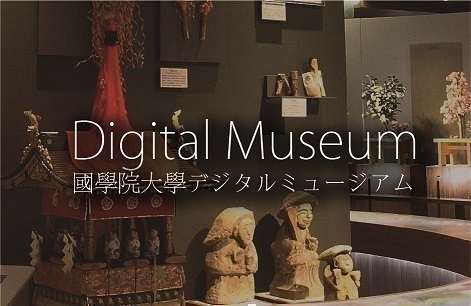- トップ
- Encyclopedia of Shinto
- Hokke Shintō
Encyclopedia of Shinto
| Main Menu: | |
| Links: |
詳細表示 (Complete Article)
| カテゴリー1: | 8. Schools, Groups, and Personalities |
|---|---|
| カテゴリー2: | Medieval and Early Modern Schools |
| Title | Hokke Shintō |
| Text | Shinto doctrines promoted by the Nichiren sect of Buddhism. From the time of its founder, the Nichiren sect has been very active in incorporating kami cults within its own system. Its Shinto doctrines as they are known today, however, were systematized between the late Muromachi and the early Edo periods. At its core exist doctrines concerning a group of thirty deities called sanjūbanshin , which developed under the strong influence of Yoshida Shintō. Nichiren claimed Tenshō Daijin (Amaterasu) and the Great Bodhisattva Hachiman as central figures among the good deities protecting the True Dharma, but he also mentioned other deities as tutelaries of the Lotus Sutra, arguing that these tutelaries would abandon any realm where the True Dharma is not upheld, while returning to protect a country where the True Dharma is realized. This is known as the "doctrine of kami and heavenly beings" (shintenjō hōmon). Nichiren's doctrine of tutelary deities gained systematization through the incorporation of the Tendai cult of thirty deities as practiced on Mount Hiei. This cult consisted in a group of thirty deities who—one for each day of the month—acted as protectors of the nation and upholders of the Lotus Sutra. Sources say that these deities were first invoked (kanjō) by the Ryōgon'in Ajari Ryōshō in 1073 as tutelaries for a "ritual sutra copying" (nyohōkyō ). (Other sources attribute the beginning of this cult to Ennin). As for the incorporation of this cult into the Nichiren sect, some sources attribute it to Nichiren himself, but it probably started toward the end of the Kamakura period with Nichizō (1269-1342), organizer of the Nichiren sect in Kyoto; by the early Muromachi period, when it was transmitted to the Nichiren groups (Nakayama, Fuji) in the Kantō region, this cult had spread throughout the entire Nichiren sect. In the second month of 1497, Yoshida Kanetomo, founder of Yoshida Shintō, addressed an inquiry to three temples of the Nichiren sect in Kyoto, respectively the Myōhonji (or Myōkenji), the Myōrenji, and the Honkokuji. In his message, Kanetomo raised doubts as to whether the thirty deities of the Nichiren sect were actually the same as those initially invoked by Ryōshō. Kanetomo also mentioned a document, the Kanemasuki, stating that his ancestor Kanemasu had transmitted the cult of the thirty deities to Nichiren. The Kanemasuki was clearly a forgery by Kanetomo, written in the attempt to expand the influence of the Yoshida House within the Nichiren sect. The Nichiren sect tried several times to rebuff Yoshida's claim, but did not succeed in definitively winning the argument; eventually, even some Nichiren priests, such as Nichigu (1423-1501) of the Myōhonji came to agree with Yoshida. The complete development of the argument is recorded in the single-fascicle Banjin mondōki. Thereafter, the Nichiren sect's discourse on kami came under the influence of Yoshida Shintō, a fact that provided an opportunity for systematizing the sect's Shinto doctrines. From the late Muromachi (sengoku) to early Edo periods, a form of Shinto called Lotus (Hokke) Shinto evolved, having at its core the cult of the thirty deities and the idea that heavenly beings protect or abandon a land according to its attitude toward the True Dharma. The tradition also involved an interpretation of various deities, beginning with Hachiman, based on the Nichiren sect's exegesis of the Lotus Sutra. Among the most important texts expounding the Lotus Shinto we find the Hokke Shintō hiketsu in four fascicles, attributed to Enmyō Nitchō (1441-1510) but probably composed during the Eiroku era (1558-1569); this is the most systematic work on the tradition. A second influential text is the Chinju kanjō kakugo yō in one fascicle by Nisshū (1532-1594), who studied under Kiyohara Nobukata, a son of Yoshida Kanetomo. In addition, Busshin Nikkō (1532-1598), who studied under Yoshida Kanemigi (the son of Nobukata), transcribed a lecture he held in the fifth month of 1590 at Chōmyōji in Kyoto on the Age of the Kami chapter of the Nihon shoki; this text, in six fascicles, is known alternatively as Shintō shishō and Shintō dōitsu kanmishō. Among the texts composed in the Edo period, particularly important is the Shinbutsu myōōron in five fascicles, written by Ryōgi Nittatsu (1674-1747). The previously mentioned Banjin mondōki, together with the Hokke Shintō hiketsu and the Shintō shishō are considered the three major works of Hokke Shintō (Hokke Shintō daisansho). See also Sanjūbanshin -Itō Satoshi |




